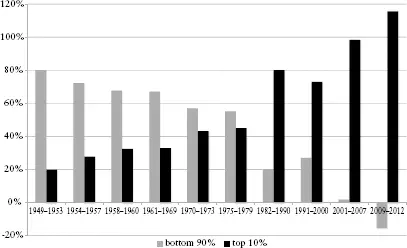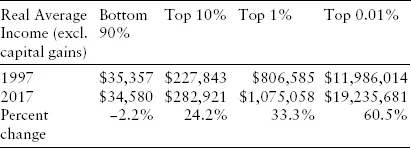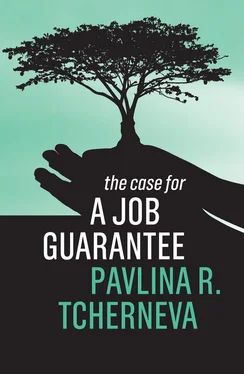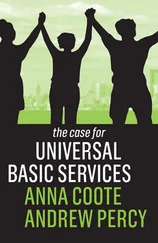To begin answering these questions, Chapter 1makes a very simple proposal: to ensure that the unemployment offices (the so-called American Job Centers) begin to act as genuine employment offices that provide living-wage public service employment opportunities on demand.
Chapter 2documents the many catch-22 situations unemployed people face in the labor market. It challenges us to think of the right to a job in the same way we think of the right to retirement security or the right to primary and secondary education. Modern fine-tuning policies (both monetary and fiscal) that treat unemployment as “natural” and “unavoidable” perpetrate the above-mentioned vandalism on people, communities, and the environment. Once we take into account its social, economic, and environmental costs, it becomes clear that unemployment is already “paid for” and the price tag is high.
Chapter 3argues that guaranteeing employment represents a new social contract and macroeconomic stabilization policy that falls within a long tradition of government guarantees. By combining key features of other public options and price support schemes, the Job Guarantee would have transformative effects on the economy. It would establish a new labor standard with an uncompromising living-wage floor for all working people, while stabilizing employment, inflation, and government spending more effectively than current practice. It would also replace, once and for all, unemployment as an economic stabilizer. The chapter enumerates the other benefits of the Job Guarantee, including but not limited to its impact on state budgets, inequality, service sector employment, and the lives of those who do not seek paid work.
Addressing the question of cost, Chapter 4provides the reader with a new perspective on affordability, and sheds light on why most guarantees are usually provided by the federal government. This chapter considers the economic meaning of the term “the power of the public purse,” and separates the real from the financial costs, as well as the real resource constraints from the artificial financial constraints . It also provides estimates of the size of the Job Guarantee budget and presents the results from a macroeconomic simulation of the program’s impact on the US economy.
Chapter 5turns to the question of implementation and design and explains how the proposal offered here differs from others. It illustrates why the Job Guarantee is inherently green , and provides examples of specific projects that could be developed and managed using a decentralized and participatory model. It recommends that the Job Guarantee is organized as a National Care Act that prioritizes care for the environment, care for the people, and care for the communities. The chapter also addresses some frequently asked questions and highlights important lessons from similar real-world job creation programs.
The concluding Chapter 6evaluates the program’s overwhelming popularity and symbiotic relationship with the Green New Deal. It clarifies the different uses of “guaranteeing jobs” that can be found in the climate discourse and situates the Job Guarantee proposal within the green agenda. It also explains why the Job Guarantee would still be needed in a zero-emissions world where temperatures have stabilized, and concludes with some thoughts about its role and place in the international policy architecture.
1 1. Robinson Meyer, “The Democratic Party Wants to Make Climate Policy Exciting,” The Atlantic, December 5, 2018.
2 2. William S. Vickrey, Full Employment and Price Stability: The Macroeconomic Vision of William S. Vickrey, edited by Mathew Forstater and Pavlina R. Tcherneva, Edward Elgar, 2004.
1 A Public Option for Good Jobs
It took eleven long years after the Great Financial Crisis to bring the US unemployment rate to a postwar low of 3.5 percent. Still there were millions of people who could not find paid work. The official figure in February 2020 was 5.8 million, but with a proper count that number would be more than doubled. 1Job loss is not an affliction that touches everyone equally. It disproportionately affects the young, the poor, individuals with disabilities, people of color, veterans, and former inmates.
Growth, we are told, will raise all boats, but drawn-out jobless recoveries have been the norm for half a century now, and jobs have increasingly failed to deliver good pay. When we consider the question “When the economy grows, who gains?” we find a disturbing answer. In the immediate postwar era, as economies expanded after each recession, the vast majority of the gains went to the bottom 90 percent of families. The exact opposite has been true of the last four expansions (Figure 1). 2Since the 1980s, a growing economy primarily grew the incomes of the wealthiest 10 percent of families. Worse, during the recovery from the Great Recession, average real incomes for the bottom 90 percent of families fell in the first three years of the expansion.

Figure 1 Distribution of Average Income Growth During Expansions
Source: Pavlina R. Tcherneva, “Reorienting Fiscal Policy: A Bottom-up Approach,” Journal of Post Keynesian Economics , 37(1), 2014: 43–66.
Today, millions of people cannot find paid work, and millions more need above-poverty pay. Wages have stagnated for decades. Real average income for the bottom 90 percent of families was $34,580 in 2017, 2.2 percent lower than it was twenty years earlier. Meanwhile, real average income of the richest 0.01 percent of families grew by 60.5 percent during the same period ( Table 1), and was nearly 556 times higher than that of the bottom 90 percent (or 1,000 times higher if we include capital gains). 3
Table 1 Runaway Inequality
Source: Author’s tabulations of T. Piketty and E. Saez, “Income Inequality in the United States, 1913–1998,” Quarterly Journal of Economics , 118(1), 2019 [2003]: 1–39.

Behind the unemployment and inequality numbers hide the millions of different faces, experiences, circumstances, and personal challenges of those dealing with joblessness and inadequate pay.
Maybe you are one of them or you know someone who is. Maybe you lost your job in the Great Recession and are now working two part-time jobs, struggling to pay the bills. Maybe you graduated high school, cannot afford college, and are looking to save some money first. Maybe the children have fled the nest and you, the stay-at-home parent, would like to find paid work, but it has been decades since your last job and you don’t know where to begin. Maybe you’ve sent out 215 résumés already, 4but even in this “strong economy” you still cannot find stable well-paid work. Maybe it’s because of your age, gender, the color of your skin, or your criminal record. Maybe you are someone with a disability who wishes to work, but getting the kind of jobs you could do seems impossible and, if you do get one, the current law allows your employer to pay you as little as $1/hour. 5Maybe the firm found a “better” candidate. You keep knocking on the next door, emailing the next employer, but the call never comes.
The unemployment office is here to help – you take additional classes, spruce up your résumé, and practice your interview skills. You put your best foot forward but strike out again. Or maybe you are hired, but it’s only another low-paying job with no benefits. You barely make ends meet and the long commute and unpredictable shifts make coming home for dinner or doing homework with the kids a challenge.
Читать дальше














